If you’re a lover of traditional English tarts, jams, and preserves, you’ve likely come across the deep purple, flavor-packed Damson plum. Revered for its bold tartness and rich flavor, the Damson plum (Prunus domestica subsp. insititia) is a heritage fruit variety that’s perfect for home orchards and backyard growers alike.
Known for producing heavy crops of small, oval-shaped, dark blue to purple fruits, Damson plums are ideal for baking into classic tarts and making preserves, syrups, and liqueurs. They’re also notably cold-hardy, low-maintenance, and well-suited to temperate climates. In this complete guide, we’ll walk you through how to grow Damson plums successfully at home — from planting and caring to harvesting and using them in delicious tarts.
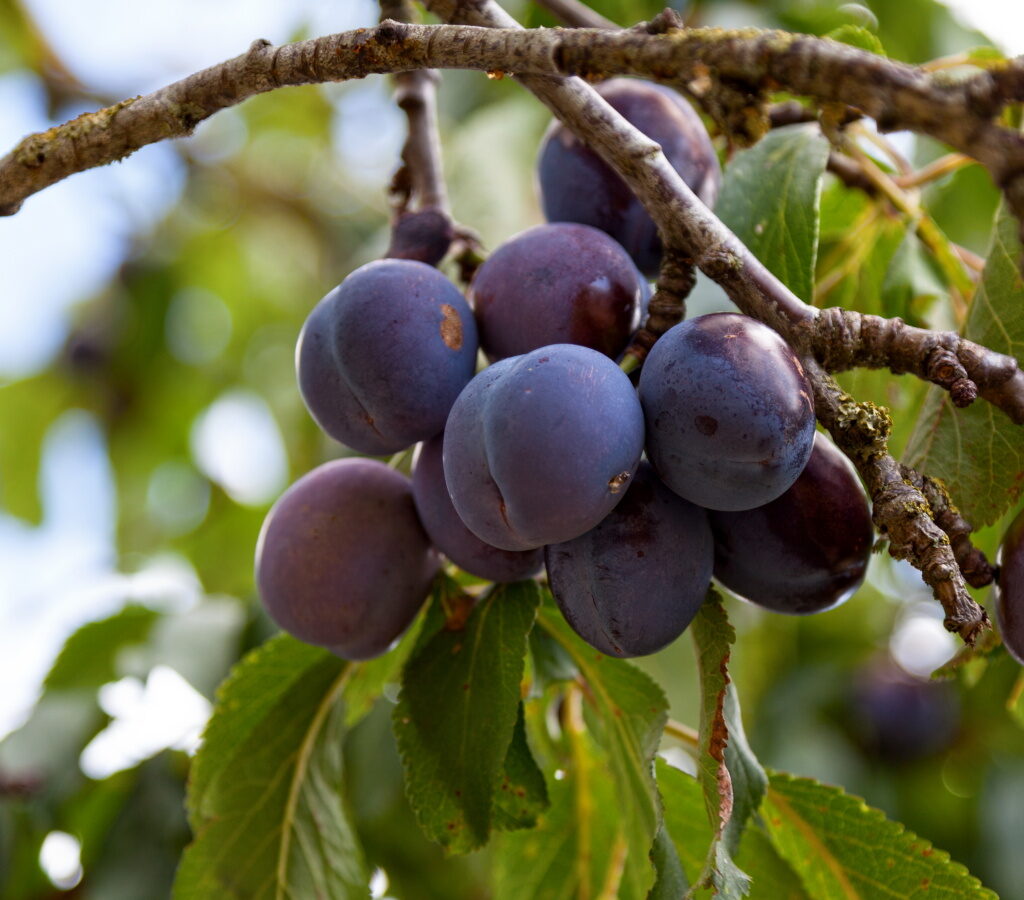
Why Grow Damson Plums?
Before diving into the how-to, let’s cover why Damson plums deserve a spot in your garden:
- Unique, tart flavor perfect for classic European tarts, jams, and desserts.
- Cold-hardy and disease-resistant compared to other stone fruits.
- Heavy yields of small, flavorful fruits.
- Excellent for preserving, drying, or fermenting into plum brandies or liqueurs.
- Adds beautiful spring blossoms to the landscape.
Whether you’re a homesteader, baker, or backyard gardener, growing Damsons offers both ornamental beauty and culinary value.
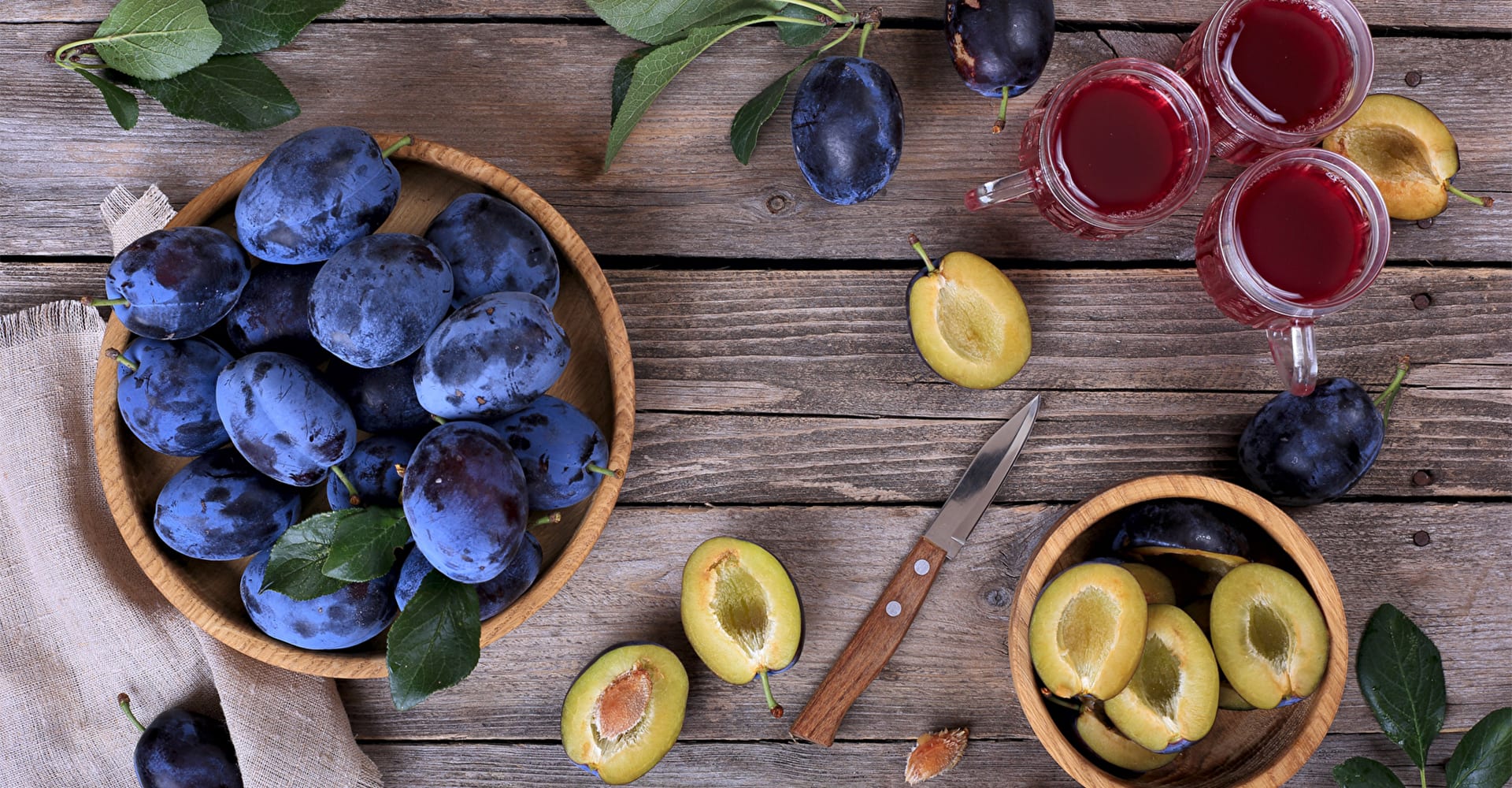
Best Damson Plum Varieties for Home Gardens
While most Damson types share a similar tartness and appearance, there are a few popular varieties favored by growers:
- ‘Shropshire Prune’: A classic English Damson with firm, deep purple skin and rich, tart flavor — ideal for traditional tarts and preserves.
- ‘Merryweather’: A slightly larger, more modern variety producing juicy, deep purple fruits with a milder tartness.
- ‘Blue Violet’: Known for its dependable yields and rich-colored fruits.
- ‘Farleigh’: Very cold-hardy, with small, highly flavorful fruits.
Tip: Choose a self-fertile variety like ‘Merryweather’ if planting only one tree, or plant two different varieties nearby for better cross-pollination and heavier harvests.
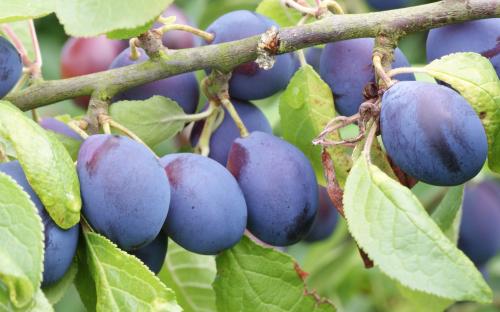
Choosing the Perfect Planting Site
Like most stone fruits, Damson plums prefer sunny, well-drained spots with rich soil.
Site Requirements:
- Sunlight: Full sun for at least 6-8 hours per day.
- Soil: Loamy, fertile, and well-drained with a pH of 6.0-7.0.
- Drainage: Avoid areas prone to standing water. Plums dislike wet feet.
- Wind Protection: Shelter young trees from strong winds, which can damage early blossoms and branches.
Raised beds or gently sloping sites work well for promoting good air circulation and drainage.
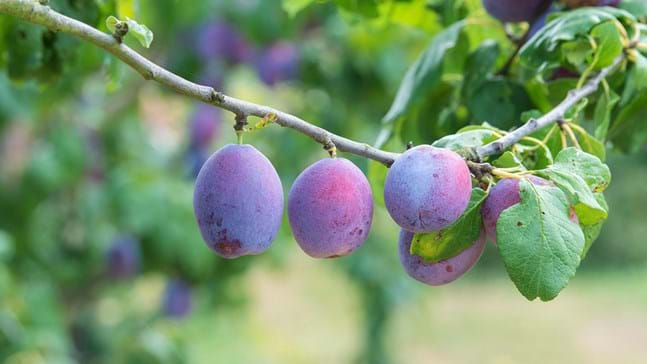
Planting Damson Plum Trees
When to Plant:
- Early spring is the best time to plant bare-root or container-grown Damson plum trees, before the growing season begins.
- In mild climates, late fall planting is also an option.
How to Plant:
- Dig a hole twice the width and the same depth as the root ball.
- Loosen the soil at the base and mix in well-rotted compost.
- Place the tree in the hole so the graft union (bulge above the roots) sits just above soil level.
- Backfill gently and water thoroughly.
- Apply a 2-3 inch mulch layer around the base, leaving space around the trunk to prevent rot.
Spacing: Allow about 12-15 feet between standard trees, or 8-10 feet for dwarf varieties.
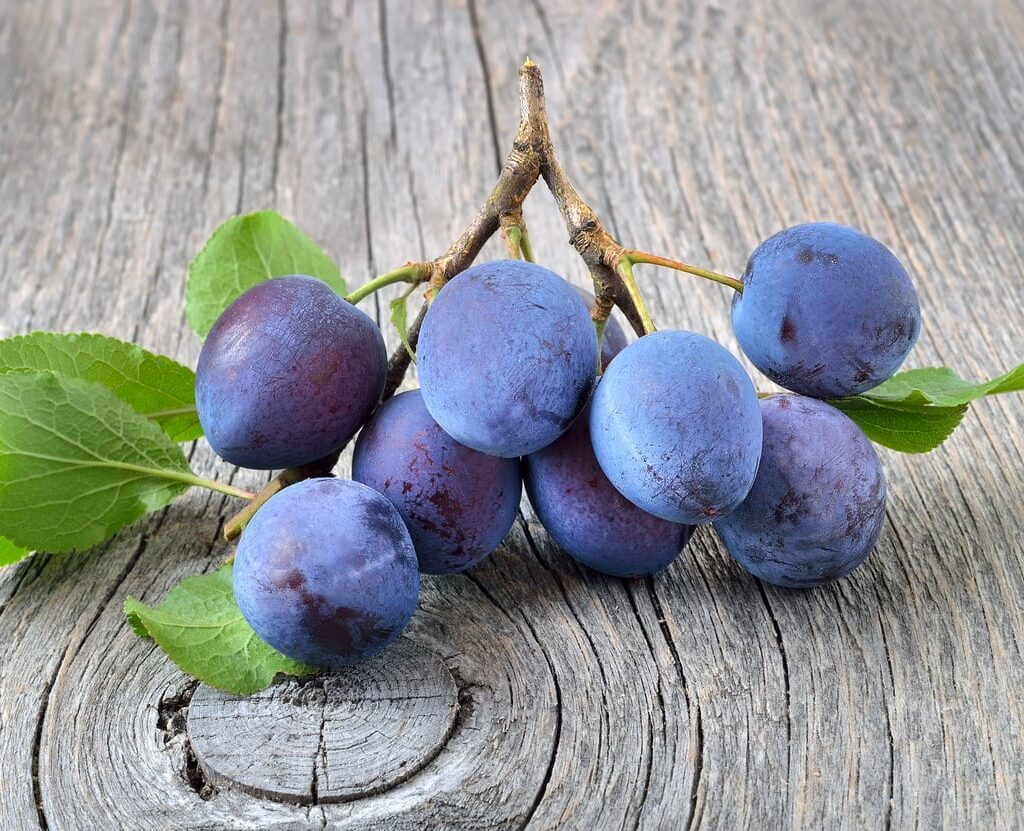
Caring for Damson Plums
Once established, Damson plum trees are relatively low-maintenance, but they’ll produce better harvests with proper care.
Watering:
- Water young trees regularly for the first two years to establish deep roots.
- Provide about 1 inch of water per week during dry spells, especially in summer when fruits are developing.
Fertilizing:
- In early spring, apply a balanced 10-10-10 fertilizer or a fertilizer formulated for fruit trees.
- Avoid excessive nitrogen, which can encourage leafy growth at the expense of fruit.
Mulching:
- Mulch annually with straw, bark chips, or compost to retain moisture, suppress weeds, and improve soil health.
Pruning:
- Prune in late winter while trees are dormant.
- Remove dead, diseased, or crossing branches.
- Thin crowded growth to improve sunlight penetration and airflow.
- Keep a balanced, open canopy shape for easier harvesting and healthier fruit.
Common Pests and Diseases
Though Damson plums are hardy and relatively disease-resistant, a few issues may occasionally arise:
Potential Problems:
- Aphids: Control with insecticidal soap or beneficial insects like ladybugs.
- Plum Curculio (beetle): Remove fallen fruit and damaged fruitlets early in the season.
- Brown Rot (fungal disease): Minimize by pruning for airflow and removing infected fruit.
Maintaining good sanitation and garden hygiene is key to preventing most problems.
Harvesting Damson Plums
When Are Damson Plums Ripe?
Damson plums typically ripen from mid to late summer (July to September, depending on your location and variety).
Signs of readiness:
- Deep, uniform purple-blue skin
- Fruits are firm but slightly yielding to the touch
- Fruit detaches easily with a gentle twist
How to Harvest:
- Use your hands or gently shake branches over a soft cloth or tarp.
- Handle with care — though firm, ripe Damsons can bruise if dropped.
Storing and Using Damson Plums
Fresh Damson plums can be stored in the refrigerator for up to 2 weeks, but they’re best processed quickly after harvest.
Culinary Uses:
Damsons are too tart to enjoy fresh for most palates, but they shine in:
- Tarts and pies: Their tartness balances the sweetness of pastry and sugar.
- Jams and jellies: A classic way to preserve their intense flavor.
- Chutneys and sauces: Ideal with pork, duck, and lamb dishes.
- Fruit liqueurs and brandies
- Dried snacks: Pit and dehydrate for chewy, tangy treats.
Pro Tip: Damsons are naturally high in pectin, making them perfect for quick-setting preserves without added thickeners.
Propagating Damson Plums
If you want to expand your orchard or share with friends:
Methods:
- Grafting: Most reliable for maintaining varietal characteristics.
- Softwood cuttings: Taken in early summer.
- Suckers: Damsons often send up suckering shoots from roots. These can be dug up and replanted.
Avoid seed propagation, as offspring won’t remain true to the parent variety.
Final Thoughts
Growing your own Damson plums is a rewarding way to enjoy one of Europe’s most beloved heritage fruits. With their rich, tart flavor and versatility in baking — especially in classic tarts — these hardy trees thrive in temperate gardens and offer beautiful spring blossoms and bountiful summer harvests.
By choosing the right variety, providing a sunny, well-drained spot, and maintaining simple seasonal care, you’ll be well on your way to harvesting your own Damson plums for delicious homemade tarts, jams, and preserves.
If you’ve got space for a fruit tree, consider the humble Damson — it might just become your new favorite backyard harvest!

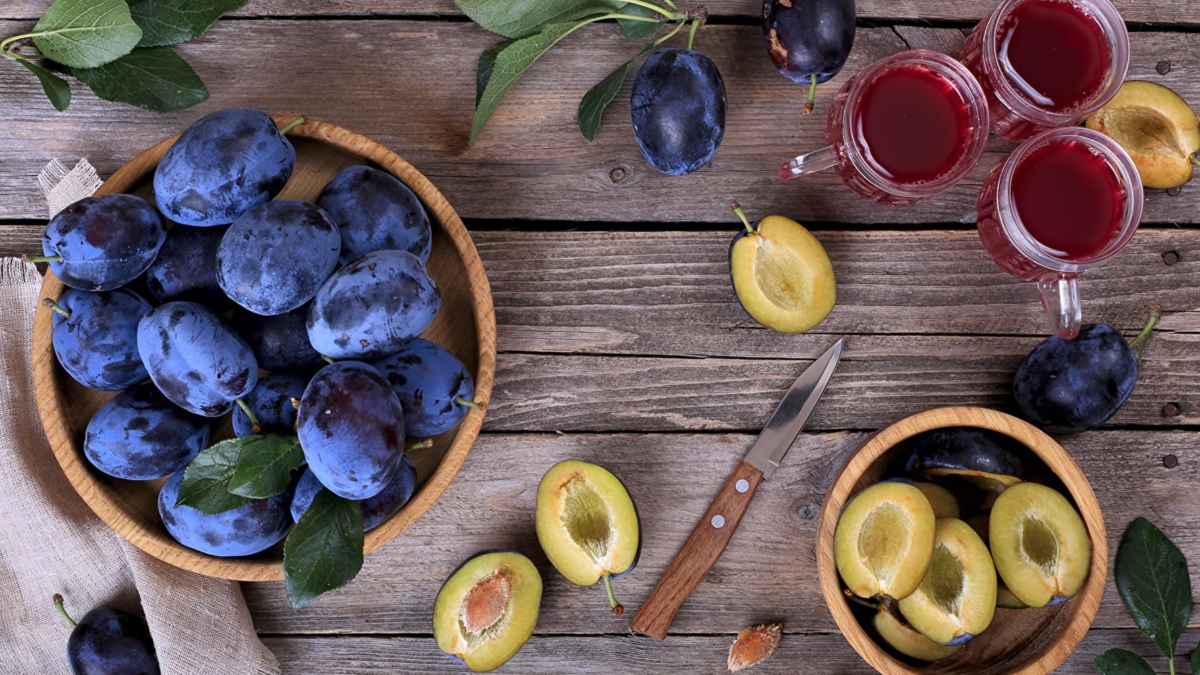




Leave A Comment